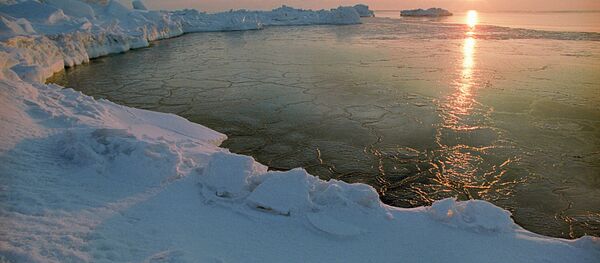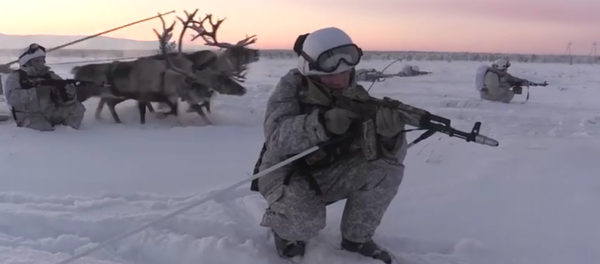In early August 2015, Russia submitted a partially revised application to the United Nations seeking to enlarge its continental shelf limits in the Arctic Ocean. The application included Russia’s scientifically substantiated claim for expanding the shelf area in the Murmansk-North Pole-Chukotka triangle.
The continental shelf is a shallow extension of the continent’s landmass under the ocean, restricted outwardly by the ocean floor bend, with the depth increasing sharply along the continental slope to the ocean floor.
Under Article 76 of UN Convention on the Law of the Sea of 1982, the continental shelf of a coastal state comprises the seabed and subsoil of the submarine areas extending beyond its territorial sea "throughout the natural prolongation of its land territory" to the outer edge of the continental margin, including the continental slope. A coastal state can always claim its rights to the shelf within the distance of 200 nautical miles from the coastline. In certain conditions, the outer limit of the continental shelf cannot extend further than 350 nautical miles. This restriction, however, does not apply to submarine elevations if they are acknowledged as "natural components" of the continental margin.
The grounds for this were a statement that the underwater Lomonosov Ridge stretching from the New Siberian Islands through the North Pole in the direction of Canada and Greenland, as well as the Mendeleev Ridge situated further east, are a continuation of the Eurasian continent and, consequently, do not fall under the 350-mile limit.
In June 2002, the application was examined and declined due to the lack of details on the bottom relief maps and justification of the continental nature of the above-mentioned ridges and their connection with the Siberian shelf.
Russia’s current, partially revised application is corroborated by the results of a 10-year complex geological and geophysical research conducted in the Arctic water area, including full-scale expeditions engaging ice-breakers and special research vessels.
The application was elaborated by the Natural Resources and Environment Ministry, which in 2010 engaged the Russian Academy of Sciences to provide the scientific substantiation of the application. The Academy of Sciences formed a creative team led by Vice President Nikolai Laverov, consisting of the best-known geoscientists and geophysicists involved in researching Arctic issues and employed by the academy’s leading relevant institutes.
The Arktika-2007 polar expedition was organized in May-September 2007 to examine the Arctic Ocean shelf. The expedition reached the North Pole on August 1.
The Mir-1 and Mir-2 manned submersibles reached the ocean floor in the North Pole area and conducted several oceanographic, hydro-meteorological and ice investigations on August 2. A unique experiment involving collecting soil and plant samples at a depth of almost 14,000 feet was implemented for the first time in history. In addition, a Russian flag was installed in the Arctic Ocean bed near the North Pole. The results of the Arctic expedition formed the basis of Russia’s position in establishing the ownership of this section of the Arctic shelf.
Data obtained by the Akademik Fyodorov expedition demonstrated the structure and composition of the basic sea bottom components and made it possible to produce the world’s first physical model of the Arctic’s geological evolution.
The bottom segment, which the updated application concerns, includes the shelf of the Arctic seas along Russia’s borders and the polar segment of the ocean basin in the region of the Central Arctic underwater elevations – the Lomonosov Ridge, Hollow of Submariners, Mendeleev Ridge, Chukchi Hollow and Chukchi Rise. The application proceeds from the point that the region’s underwater elevations naturally belong to the continent’s outlying parts, making a block of the continental, not oceanic, Earth crust that moved occasionally but never tore away from Eurasia.
The updated application also refers to unsettled Russian-Danish and Russian-Canadian issues of the delimitation of maritime territories. Denmark’s application dated December 2014 for the shelf north of Greenland concerns a major part of the territory Russia applies for – particularly, the polar territory and part of the Lomonosov Ridge. The Canadian application, now under consideration, might also involve the territory that Russia is applying for – namely, the Mendeleev Ridge.
Considering the superimposition of their applications, the Arctic states’ foreign ministers met in Ilulissat, Greenland, in 2008, to adopt a declaration pledging to settle these and similar issues in the spirit of goodwill and compromise based on bilateral talks.





